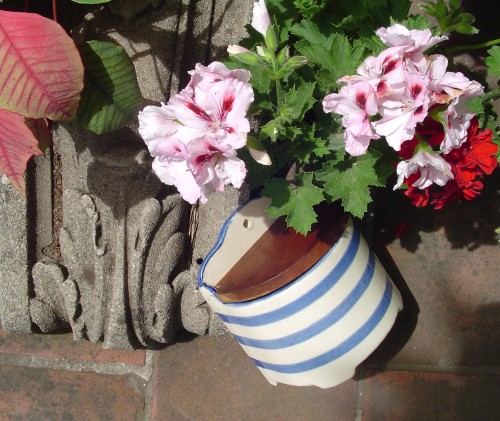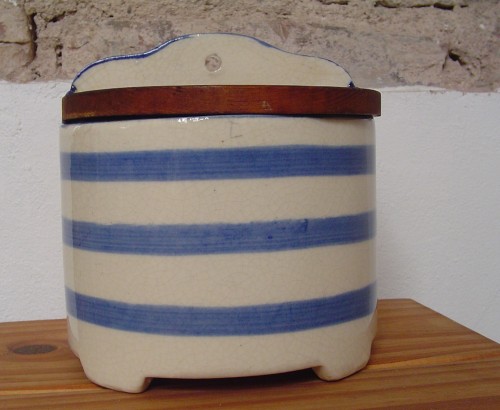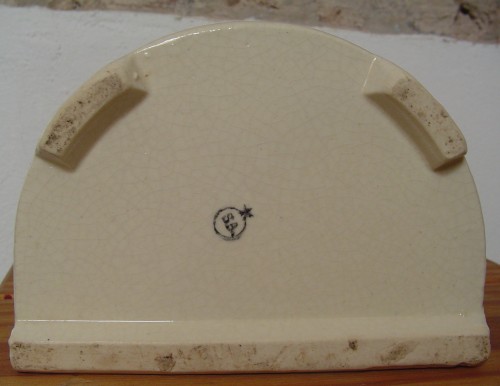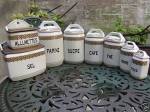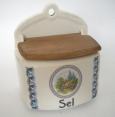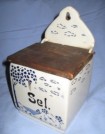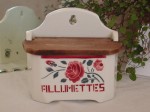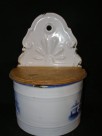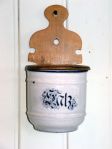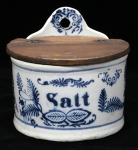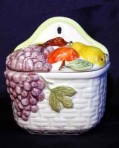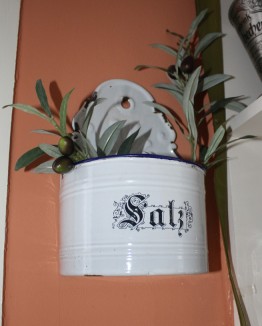This blue and white pottery lidded salt box can be placed on a counter or mounted on the wall. The wooden lid is held in place by small pins. The base is marked with a star and the letters “SB”. The salt box measures approximately 5.9 inches wide by 3.9 inches tall in front and 5.9 inches tall at the back.
Salt Box
With a culinary history centuries old in England, Germany and France, the traditional salt box holds about one pound of salt and can sit on a counter or hang on the wall. The protective flip-top wooden lid provides easy access to the covered salt. The dry heat coming off the stove helped keep the salt granular instead of lumpy.
Salt-Box House
A salt-box house is a type of frame house which is distinguished by having two stories in the front, one story in the back and a huge chimney in the middle. The second floor used to overhang the first floor and the windows were very small. The entrance is situated exactly in the middle of the house.
This architectural style emerged in New England around 1630, and salt-box homes were built well through the mid-1800s.
The name of this style of architecture refers to the containers in which salt was once kept. Salt was at that time a very valuable commodity, and it was carefully stored in containers which often looked much like miniature versions of a salt-box house.
“The “Salt-Box House” was built in 1738, and the history of its century and more of usefulness give an opportunity to record many an old order that has changed and custom that has passed away. The name “Salt-Box House” was a colloquial title springing from the resemblance borne by the building to the wooden salt box that hung in the kitchen chimney. The house was set upon a hill near the lovely village of Stratford, Conn., where it may still be seen, in a state of semi-ruin among woodbines and raspberry bushes.
It was built a “plank house”, like others of its periods, the sides being made entirely of wide planks two inches thick, standing upright side by side. “Raising bees” were then in fashion, and the neighbors gathered to help put together the framework of the new building “to the wagging of the fiddlesticks”. Some of the planks were 30 feet long, however, and there was much more work than play to a “raising bee”. The shape of the house, with its deep sloping roof, was according to a fashion established in Queen Anne’s time, when a tax was imposed upon houses of more than one story. The salt-box style gave a one story front and ample space for additional rooms under the roof behind. In this way the tax was eluded, and a very picturesque and individual example of architecture gained “. “Books of the Season” – The New York Times – Published: December 22, 1900.
